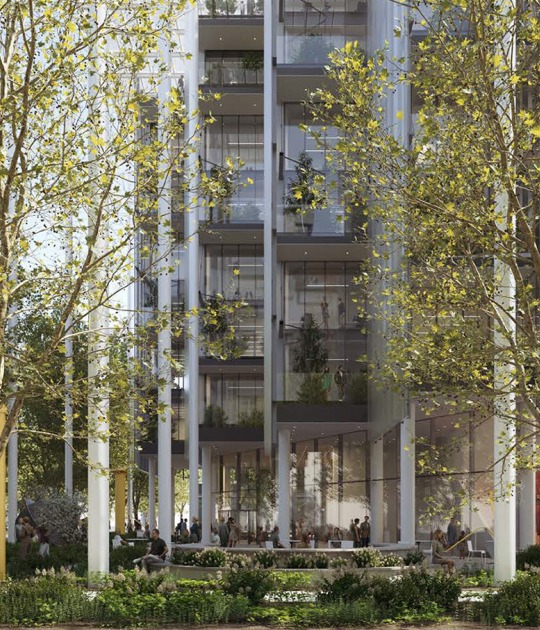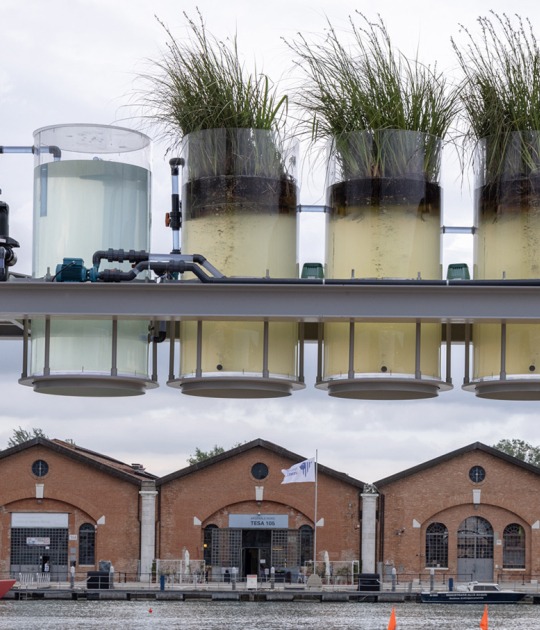Working in urban planning management gives you the opportunity to design, modify and zone different parameters and spaces that a city, a small town or a neighbourhood will be governed by in the future. When you sit down to think about the best solution for an area or a small neighbourhood, the determining factors and the rules of the game are somewhat different. The client, in principle, is usually one, but in practice there are many more since the solutions have repercussions on an indeterminate number of general and specific interests.
In the case of the Plan Especial de Reforma Interior, for example, we ensure that all the coefficients and ratios imposed by the regulations are fulfilled while at the same time trying to provide the best formal solution by putting in place certain equipment, green zones, number of dwellings and building parameters within this framework of built-on or empty public and private plots that form a road network that has grown up over the years.
I won’t talk about the technical aspects now because there are much more qualified people who can ramble on about that. Instead, I’ll simply tell you about the concerns and experiences I have had during the process, which in some way is what this weekly couch has been created for.
The Dialogue
The fact of being with someone with experience has given me a sense of calm about everything that happens after the purely technical work. In the first place, the dialogue with the politicians was set up in the same way any of us sits down with a client. As technicians, we explained the rules of the game of the municipalities and super-municipalities at the regulatory level that make up the game board with which a particular solution was arrived at and it was debated in a series of meetings about the adaptation of the different pieces or schemes that had been put in place until a satisfactory graphic document was produced.

Still from the film Frankenstein (1931) directed by James Whale, based on the novel Frankenstein or The Modern Prometheus by Mary Shelley.
The exhibition
The day arrived when this document with the summary of the plan was shown to the public. The suggestion period began and the visits by neighbours curious to know the proposed plans for their neighbourhood. The days passed peacefully and we went to appointments to explain the proposal until we found out about a neighbourhood campaign against the plan that included a web page. It’s not pleasant to see incendiary comments about yourself made by people who don’t even know you, especially when the only thing you have done is your job in a well-reasoned, logical way that offers the opportunity for debate and suggestions.
We called an open assembly to explain the plan openly and to answer all the questions that the project brought up. We were open to any reasonable change that was proposed.
I have to say that the feeling that came over me when I sat down in front of that auditorium was that nobody wanted to know our “Frankenstein”, just like in the Shelley novel.
Harangued because of ignorance or manipulation, our ‘monster’ was a threat for the masses and at first the torches won over dialogue.
Over time, all this helps you to put things in perspective. In fact, most of the time this type of rejection almost always happens in reaction to anything that disrupts the routine or the retina of society.
The fear of change. Many groups use this fear for political or personal motives to instigate rejection. How many projects have been rejected at first… and time has shown that that building, that square, that neighbourhood have become an intrinsic part of the environment and people make them their own.
One thing is clear. Everything that is old was once new. It’s the acceptance of the new element, the understanding of it, the use of it and the passing of time that make an architectural element have value in society.

Frame of the movie "Young Frankenstein", 1974.
The great urban planning excesses in construction and in the world of corruption have made us a target, like it or not. It’s up to the universities, the colleges and ourselves to recover the lost trust in our profession so that ‘fear’ is no longer used to manipulate, even before we have a chance to express our ideas and projects.
Usage and time will later prove us right… or not. Until next week.
TO BE CONTINUED... NEXT WEEK MORE!! > > "YELLOW PRESS AND OTHER DAMAGES"
IN TREATMENT - METALOCUS.
DIRECTOR: JOSÉ JUAN BARBA. COORDINATION: INÉS LALUETA. ORGANIZATION: INÉS LALUETA, PEDRO NAVARRO. ENGLISH VERSION: KAREN SIMPSON. GUESTS FIRST SEASON: JOSÉ JUAN BARBA, MARINA DIEZ-CASCÓN, SERGIO DIEZ-CASCÓN SOLER, LARA FERNÁNDEZ GONZÁLEZ, CARLOS GERHARD PI-SUÑER, MONTSE PLA GARCÍA-CASTANY, XAVIER NICOLAU CUYÀS, FERNANDO RIAL PONCE, VERÓNICA ROSERO.







![Friedrich Kiesler, Endless House for Mary Sisler [shattered sketch sheet], New York and Florida, 1961, 21.5 x 33.4 cm, pencil on paper, mounted on cardboard. Courtesy by the Austrian Frederick and Lillian Kiesler Private Foundation, Vienna Friedrich Kiesler, Endless House for Mary Sisler [shattered sketch sheet], New York and Florida, 1961, 21.5 x 33.4 cm, pencil on paper, mounted on cardboard. Courtesy by the Austrian Frederick and Lillian Kiesler Private Foundation, Vienna](/sites/default/files/styles/mopis_home_news_category_slider_desktop/public/2025-05/metalocus_Fundacio%CC%81n-Frederick-Kiesler_03_p.jpg?h=3b4e7bc7&itok=kogQISVW)











